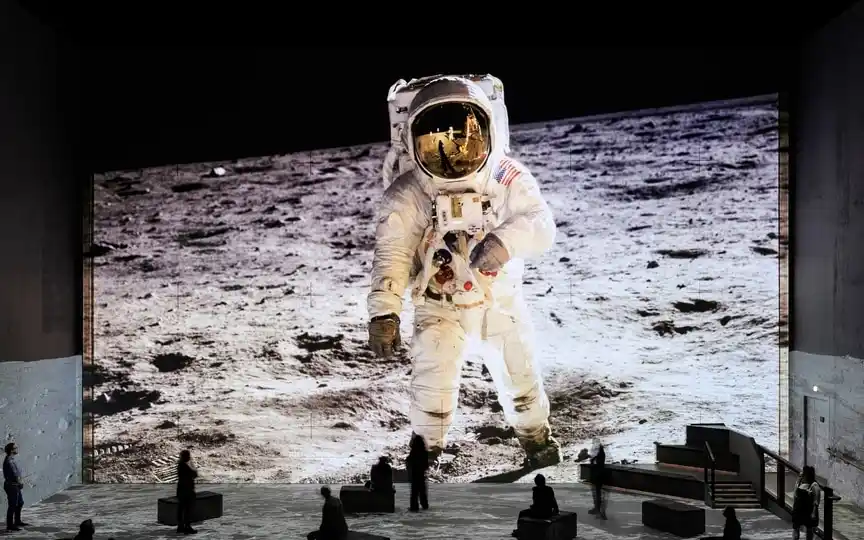Another moonshot, or even five, is necessary
In a positive scenario, Japan is poised to join the ranks of countries embarking on a moon mission this year, marking a significant increase in lunar exploration activity not seen in fifty years. This resurgence is being spearheaded by nations that are not typically associated with leading the space race, signifying a crucial advancement for the entire world.
As wacky as it sounds, great adventures are more often driven by nationalism and imperial conquest. India won the latest round in August by being the first to land a spacecraft near the Moon’s south pole. Apparently, it succeeded in the feat just a few days after superpower Russia failed at the same task. As we’re keeping score, the South Asian country now becomes the second country to currently have an operational one on the moon, after China. On Thursday morning, the launch of Japan’s H2-A rocket, already delayed by weather, will carry the country’s first lunar lander.(1)
For space geeks, this is the most exciting time since the 1960s, when the Soviet Union and the United States traded rockets and the Great Space Race became a proxy for the Cold War. It may just be a coincidence that the Americans won the battle to land men on the moon and also won the war, but we mustn’t lose sight of the reality that a nation with superior technology—much of it developed in direct response to competition—has remained the strongest industrial and military power ever since.
In all, we have at least five countries—China, Japan, South Korea, Israel, and Russia—racing to land an object that has much more legs than just orbiting the moon and taking pictures. The US plans to send people back for the first time since 1972 and set up a base there.
Now is the time for new nations to get in the game and benefit from their own moonshot programs. It’s not cheap, and there will be a lot of failures. Thanks to Japan’s participation, Mitsubishi Heavy Industries Ltd. is now a space company. Revenue from launching and launching satellites to the moon can be plowed back into everything from control systems to electronic components, benefiting its other businesses such as aerospace and advanced materials.
South Korea is also in line. Hyundai Motor Co. announced in April that it is cooperating with major Korean research institutes and plans to send a rover to the moon within four years. In order to get the job done, the car manufacturer uses technologies it has developed, such as robotics, LiDAR technology, solar charging, autonomous driving and radiation protection. Then there’s Israel, where nonprofit SpaceIL plans to send Beresheet 2 on another lunar landing attempt by 2025 after Beresheet 1 crashed in 2019. The project was put in jeopardy when major donors pulled their investment in May.
This new interest raises fears of increased competition and a new arms race. These are valid concerns, but something more important is going on: a new series of periods means entirely new technologies to be developed and venture into new countries.
We cannot be so naive as to pretend that space programs and weapons development are not connected. The Soviet Union was the first to put a man into orbit, in part because it had developed better rockets to carry nuclear warheads across the planet. The U.S. caught up and overtook its competitors due to its superiority in software, integrated circuits, and materials science.
Many of these technologies were later adopted in Vietnam and subsequent wars, and today it is almost impossible to delineate the global aerospace and defense industry. Lockheed Propulsion Co., which built the key engines used in the Apollo program. and the Martin Company, responsible for the Gemini program’s Titan missiles, have since joined as one of the world’s leading defense contractors.
While much of the information gleaned from just a dozen people walking on the moon has previously been used for military applications, much more was discovered for civilian uses. Modern digital imaging, including the cameras used in smartphones, are descendants of early NASA research. With NASA money, dozens of technologies were developed or fine-tuned, from solar cells and water filtration to the propulsion of rockets and jets. This effort, which came directly from the White House and John F. Kennedy’s famous 1962 speech, gave American industry a tremendous lead that it would enjoy for decades to come.
While China’s moon landing demonstrates its aerospace prowess, India’s success is all the more remarkable for its small budget of around $75 million. Not that the Chinese are extravagant either, but the country’s $8 billion space budget is second only to the United States.
Israel’s financial problems highlight the first challenge in getting rockets off the ground: money. But when governments, along with research organizations and commercial clients, find the money to make these projects happen, we face the real possibility that moonshots are truly a global enterprise. That alone is an achievement worth celebrating.




